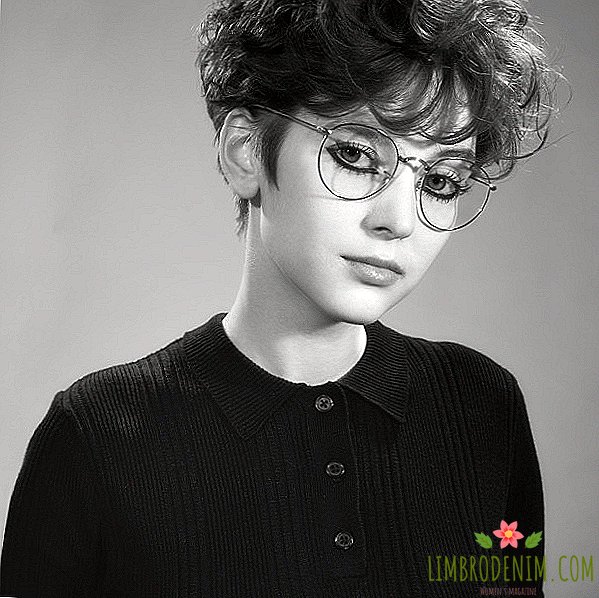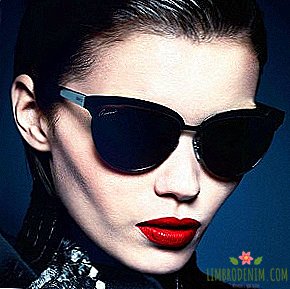Fun and strange: How fashion got rid of seriousness
For about the past 15 years fashion and its consumers took themselves very seriously: it was assumed that fashion should necessarily come with a set of luxury, and its target audience was an adult and wealthy person. The luxury category seemed untouchable, and fashion houses sought to invent more and more strategies for its serious advancement: creative directors went through and recreated fashion house archives, inspired by all the decades of the 20th century, glossy editors diligently retouched a picture of the world, marketing director brands offered a self-identification model through consumption expensive goods, and consumers in return tried to match the glossy picture as much as possible. Someone obediently bought a 2.55 Chanel bag, because it was necessary, someone broke a piggy bank for her, someone bought a fake.

Another engine of this mechanism was the sincere desire of young people to grow up as soon as possible in order to afford everything that the world of gloss and advertising offered. By the age of 13-15, girls skillfully camouflaged themselves into an adult sexual object: they did bright makeup, wore massive jewelry, high hairpins, and completely lost control when they were going on some Halloween. It turned out the picture, cut off from reality. Gradually, conversations about style, taste and originality were added to the conversation about the elitism of fashion - and bloggers poured out onto the streets of fashionable capitals like the colorful M & M's nuts. But their faces are not exactly radiant with self-irony.
But what do we have now, when standards bring boredom, and the wardrobes are already full? Bloggers have turned into a homogeneous motley mass from one egg of the hatched characters and quickly lost credibility - remember the article by Suzy Menkes. The bestial interest in the luxury has disappeared, and a crisis has come to replace the golden merry-go-round of gloss, street fashion, relaxation, normcore and nostalgia for youth, negligence and irony. The fact that everyone suddenly remembered of naturalness is a link of exactly the same chain: to be un-played now means to be sensible. On the cover of Jalouse, 12-year-old model Tilan Blondeau appears in a completely different form than a couple of years ago in Vogue, and Johnny Depp poses with a teddy bear.
The most promising of the designers nominated for the LVMH Prize with a prize fund of 300 thousand euros - Simon Port Jacquesus. He is the most infantile. His aesthetics is entirely based on youth and childhood: socks, sneakers, canopies, pink aprons, ice cream t-shirts. A new collection of the brand for the autumn-winter 2014 looks even more frivolous than the previous one: the designer takes into account the hypertrophied forms, shows almost clown spongy neoprene coats, the texture of which is compared with children's play mats.

Now progressive fashion can be anything, but the main thing is not respectable and boring. For example, it can be ultrabudgetary: it's time for clothes from a supermarket or “all for 99 rubles” stores. Design - distorting the contours and proportions of the body, as in J. W. Anderson. Or stupid: putting crocs in the city is a call worse than an anonymous call to the police. The casting director of Preston Chaunsumlit, who is also the main master chorus of New York, wears them with a trench.
Yes, fashion behaves like a teenager today. American psychiatrist and writer Robert Coles identifies several features of adolescence: a sense of grandeur and invulnerability, increased concentration on himself, separation from society and irony, preoccupation with appearance. In general, these features can be attributed to the generation of the most interesting young designers, who now have high hopes. These are avant-garde and uninhibited Christopher Kane, Ashish, Jacmus, Meadham Kirchhoff, young designers from the short list of the annual H & M competition and a parade of their like-minded people.
Young and interesting brands more and more give free rein to their imagination, go to meet art, offering elaborate and strange things, inspired by contemporary artists, or entirely created in collaboration with them; Adapt street style - visors, sneakers, sandals with socks, torn denim, T-shirts with silly inscriptions; odd stylistic techniques like giant mittens made of colored fur and bast-like fur slippers do show. This is done before the restrained Swedes Acne, and even houses such as Fendi.

We see similar behavior in the strategies of creative directors who free big fashion houses from past conservatism and clown around as much as they can, drawing inspiration from the streets, rather than imposing style on them. This is what they do with the help of their unbridled fantasy Humberto Leon and Carol Kim in Kenzo. In his first collection for the oldest brand Louis Vuitton, Nicolas Ghesquières shows rubber boots, pink quilted jackets, and transparent raincoats. The most obvious example is Jeremy Scott as a new art director. In his first collection for Moschino, sarcasm is sewn into each seam of a chocolate dress or a McDonald's bag.
The founders of Rodarte, sisters Kate and Laura Mallivi, who previously showed evening gowns for red carpet, created a spring-summer collection inspired by the subculture of American chino, and for autumn-winter they made dresses with Star Wars hero prints. Edie Slimane works in the same way, promoting the youth grunge in the new Saint Laurent. Young British designer Ashley Williams shows plush shark-like bags. London and American advanced youths are riding in the HBA brand hoodie, which is inspired by the streets. While designers on the catwalks create soap bubbles, street brands like Adidas and Nike come up with more and more strange, and sometimes deliberately ugly-idiotic and therefore more charming shoes.

Not only designers, but also consumers are becoming more relaxed and bolder. The new norm is a healthy attitude towards yourself and others, a sense of humor and naivety. New hero - la femme enfant. Pretense was replaced by charm. Adult girls wear funny sneakers, panamas, crochet tops like favorite pop groups of the 90s, weave braids and do not paint, hang themselves with baubles. Because it is a new spontaneity that entertains and attracts at the same time. Nobody wants to dress up from head to toe, like a blogger on the issue, patiently waiting for him to be removed from the best angle, and style icons are those who dress spontaneously and erratically, as in childhood.
One of the main modern stylists, the Englishwoman Anna Trevelyan, does look like a fan of Japanese anime: glitter manicure, platform shoes, pink hair always accompany her. Anna is the stylist of two brands who today also promote street style and humor to the masses: Ashish and Nasir Mazhar. Everything sprouted and acquired by young energy, streets and subcultures, appears on the catwalks and in advertising campaigns of large brands: bombers, coarse jackets, black leather jackets, massive shoes, skate slip-ons and ripped denim.
For people conservatively related to fashion, all this may seem like a strange whim. But who cares about conservatism today, if pop culture mixes with elite, Kim Kardashian appears on the cover of Vogue, and Anna Wintour calmly transplants from the first to the second row of the show. The well-known wisdom of life says that the more you have achieved, the easier you feel about yourself, and you should look at Suzy Menkes: one of the most influential people in the fashion world wears a funny jubilee all his life and neglects the "rules." Her example says that when you know everything about fashion, you can ignore it and even with a clear conscience make fun of those who are too serious with it. Your line of behavior is built into a healthy relationship with clothes. As one of the creative directors of the American brand Proenza Schouler, Jack McCollough, says in an interview with Dazed & Confused: “Things have no purpose, they mean nothing. I want to buy stupid things. Just crap. I'm tired of overpriced, thoughtful things. clamped ". It is common to get rid of frames and stereotypes in a free society. "Modernity, simplicity and freedom!" - this slogan of French designer Claude Montana today seems to be the most appropriate: what was normal and permissible in childhood, and with age, it seemed hopelessly lost, is now returning.
the photo: Sipa Press / Fotodom




